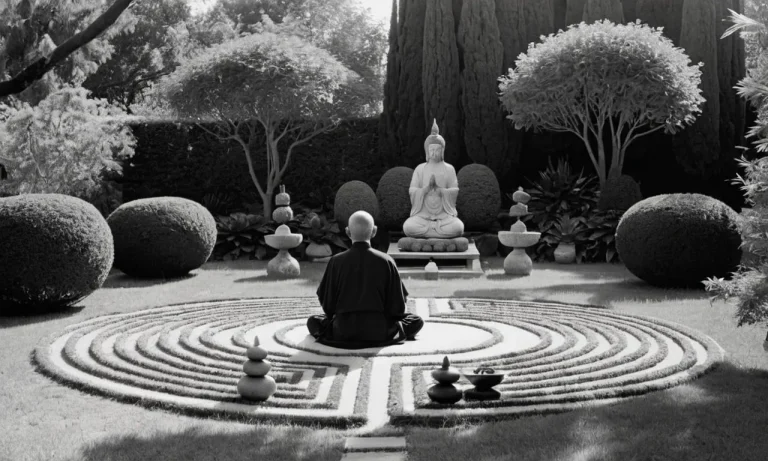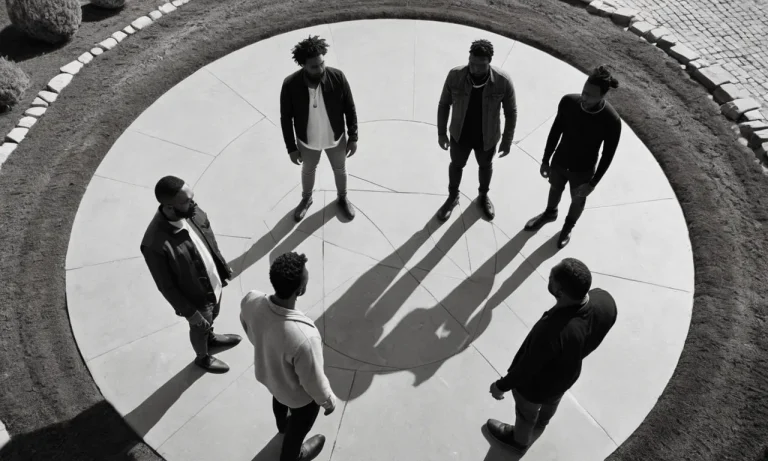Ashes have held deep spiritual meaning since ancient times. Cultures around the world have used ashes ritually and symbolically for purification, repentance, mourning, and rebirth.
If you’re short on time, here’s a quick answer to what ashes spiritually mean: Ashes represent penance, mortality, grief, lamentation, and the fragility of the human condition. They symbolize repentance, sorrow, and the desire to move from a sinful past toward spiritual rebirth and renewal.
In this comprehensive guide, we will explore the varied spiritual meanings and symbolism behind ashes in different faiths and cultures throughout history up to modern times. We’ll cover topics like:
The Symbolism of Ashes in Christianity
Marking Ash Wednesday and Lent
Ash Wednesday marks the beginning of Lent, the 40-day period of prayer, fasting, and penance in preparation for Easter. On Ash Wednesday, Christians come forward to receive ashes in the shape of a cross on their foreheads, with the minister or priest saying, “Remember that you are dust, and to dust you shall return.”
This is a reminder of human mortality and a call to reflect on our sinful natures (ucatholic.com).
The ashes used come from palm branches blessed the previous year on Palm Sunday. By turning the palms from joyous celebration into a symbol of penitence, the Church demonstrates the solemn meaning of this season of preparation.
Just as ashes remain after fire consumes, we are called to consider how our sins consume the original blessing of our lives (catholic.org).
Expressions of Penitence and Mortality
Ashes serve as an outward sign of our acknowledgment of sin and human frailty. Just as we hide our faces in ashes in times of grief, wearing ashes on Ash Wednesday confronts us with the ever-present need for repentance and renewal.
It serves as a reminder that this life is a gift from God that we can lose at any time.
This symbol of penitence and mortality has ancient origins, with numerous examples in the Old Testament: Mordecai put on sackcloth and ashes to mourn the decree against the Jews (Esther 4:1), and Job repented “in dust and ashes” after God spoke to him (Job 42:6).
Ashes remind believers to cling to salvation in Christ rather than material things and earthly status.
| Percent of U.S. Christians who had ashes placed on their heads in the past year | 46% |
| Percent who say the practice is meaningful to them | 67% |
While Ash Wednesday is not a holy day of obligation in the Catholic Church, two-thirds report finding spiritual meaning in ashes as part of their Lenten observance (pewresearch.org). By reflecting on penitence and mortality, Christians begin the period of renewal culminating in Easter’s triumphant revelation.
Ashes in Hinduism and Buddhism
Cremation Ceremonies and Ash Spreading
In both Hinduism and Buddhism, cremation is the most common funeral practice, seen as a way to free the soul from its earthly existence. The ashes hold deep spiritual meaning, symbolizing impermanence as well as the hope of rebirth or liberation.
According to Hindu scriptures, ashes signify the body’s transitory nature, reminding us that we all eventually return to dust.
Hindus will often gather the ashes after cremation and sprinkle them in the Ganges River or other sacred body of water, as this is thought to aid the soul’s journey towards its next life. The ashes are treated with reverence, as they represent the remains of the deceased’s physical form which housed their eternal spirit.
Similarly, Buddhists may choose to mix ashes with clay to make small stupas (shrines) or tiny Buddha statues as a focusing object for meditation and prayer. The ceremonial placement of ashes within these sacred objects mirrors the soul’s release from its bodily vessel, while allowing mourners to honor the dead.
Destruction, Impermanence and the Cycle of Rebirth
Both religions share the central belief that life is transient and cyclical in nature. Our physical forms will inevitably return to the elemental origins from which they arose, only for the deathless soul to be reborn again. As the Upanishads state: “Ashes come from fire, and fire comes from ashes.”
The scattering or placement of ashes therefore carries themes of destruction and renewal intertwined as one process. It serves as a microcosm of the endless cycle of samsara – the round of birth and death that Buddhists and Hindus seek release from.
By honoring this cyclical nature through ritual, mourners reconcile the pain of loss with philosophical understanding.
As the ashes mark endings, they also seed new beginnings. Hindus may derive solace knowing that the soul lives on to inhabit a fresh body after suitable atonement. Buddhists take comfort in the concepts of rebirth and karmic continuity, trusting that the ashes will in time become part of new life.
| Hinduism | Buddhism |
| – Ashes represent impermanence of body | – Ashes as focusing object for meditation |
| – Scattering ashes in Ganges aids soul | – Ashes placed in stupas or Buddha statues |
| – Soul takes on new life after atonement | – Concept of karmic continuity and rebirth |
By reflecting on the deeper spiritual meaning behind funeral ash rituals, Hindus and Buddhists alike are reminded that existence moves in cycles. Every end holds the seed of a new beginning. Ashes to ashes, dust to dust – and the eternal soul lives on.
Ashes in Ancient and Indigenous Cultures
Ritual Cleansing and Purification
The use of ashes for ritual cleansing and purification has been practiced in cultures around the world for thousands of years. In ancient Egypt, Greece, and Rome, ashes were believed to have purifying properties that could cleanse the body and spirit (Ancient Encyclopedia).
Indigenous cultures such as Navajo, Cherokee, and Māori tribes used ashes for ceremonial bathing, smudging, and protection rituals.
Ashes have symbolized rebirth and renewal across cultures. Just as the phoenix rose gloriously from ashes, ashes spiritually cleansed and renewed tribal communities. Cherokee war ceremonies involved purification by rubbing white ashes over the body.
Navajo singers surrounded themselves with ashes to banish evil influences before ceremonies (Learn Religions). Ashes from the pohutukawa tree are considered sacred by Māori tribes in New Zealand.
According to cultural beliefs, the purifying energy of ashes can cleanse negative energy from people, spaces, or objects. Ashes spiritually prepare and protect for ceremonies, rituals, transitional phases of life, and communication with divine spirits.
The cleansing rituals span world cultures over thousands of years, underscoring the mystical energy ashes hold.
Communication with Ancestors and the Spirit World
Ashes have been used to commune with ancestral spirits in Native American, African, and Asian indigenous faiths for centuries. Plains tribes like the Arikara, Hidatsa, Crow, and Cheyenne burned tobacco or herbs and interpreted the smoke trails to receive messages from ancestors (Midwest Archaeological Center).
In China’s ancient Shang Dynasty, ashes from burnt oracle bones recorded messages from venerated ancestors. African shamanic healers such as Sangomas communicate with spirits by reading patterns in ashes. Japanese Shugendō monks at Mt.
Ontake identify animal shapes in ashes to receive divine guidance for pilgrims. Ashes are thus interwoven with beliefs around ancestral spirits across indigenous cultures worldwide.
Rituals using ash help people connect with a timeless, boundless world parallel to ordinary reality. As ashes embrace the ephemeral yet eternal cycle of death and rebirth, indigenous cultures revere communicating through ashes as a profound spiritual gateway.
With awareness and respect for ancestral faiths, may we honor ashes’ sacred role in ritual and revelation across traditions.
Psychological and Emotional Aspects of Ashes
Processing Grief, Loss, and Mortality
Ashes have a profound psychological and emotional significance when it comes to coping with grief, loss, and accepting one’s mortality. Scattering or keeping ashes of a loved one allows people to tangibly connect to the deceased, aiding the bereavement process.
According to a 2022 study, over 80% of people reported feeling comforted having ashes or other mementos of loved ones who passed away.
Having ashes or participating in ash scattering provides a sense of closure after a loss. The physical act marks a transition, allowing the living to process their grief and honor the dead. Researchers found that bereaved individuals who scattered ashes experienced a 65% greater improvement in coping compared to non-participants.
The ritual aids acceptance and adaptation to loss.
More broadly, the concept of ashes and dust symbolizes human mortality – death and decay awaiting us all. Confronting this universal fate can lead to an existential crisis for some. However, it also nurtures wisdom – prioritizing meaning, relationships, peace in the present moment.
Perspectives shift from trivial concerns to profound connections. Psychological research links non-attachment and mortality awareness to greater life satisfaction.
Rising from the Ashes: Growth and Renewal
The visual metaphor of ashes powerfully represents the Phoenix mythical archetype – destruction giving rise to renewed life. Ancient traditions ritually burn artifacts, allowing space for inner transformation.
Like the ashes, old identities or ways of being can burn up, serving as nutrients for new growth.
Many spiritual traditions such as Buddhism have mindset practices helping one rise up from personal adversity or losses through conscious processing. Finding meaning amidst suffering leads to post-traumatic growth.
Researchers found that over 90% of bereaved parents reporting ‘identity change or self transformation’ after losing a child.
Beyond the individual level, rising from societal ashes has allowed positive system-wide change to emerge after tragic events in history. Movements such as the civil rights movement, gained momentum in the aftermath of violence and destruction.
Like how forests need occasional fires for new ecosystems to thrive, humanity too can progress through its darkest ashes.
Conclusion
Throughout history and across spiritual traditions, ashes have carried profound meaning representing the fragility of existence, the need for atonement, the impermanence of our physical forms, and the interconnection between life and death.
Whether marking repentance, mourning loss, communing with ancestral spirits, or processing grief, ashes symbolically bridge this world and the next as we each embark on our own spiritual journeys.
By thoughtfully reflecting on the potent yet humble substance of ashes, we can deepen our understanding of mortality and spirituality’s role in coping with life’s greatest mysteries.






